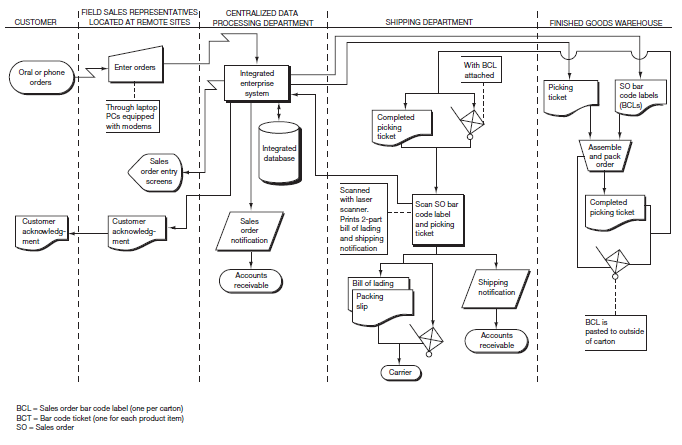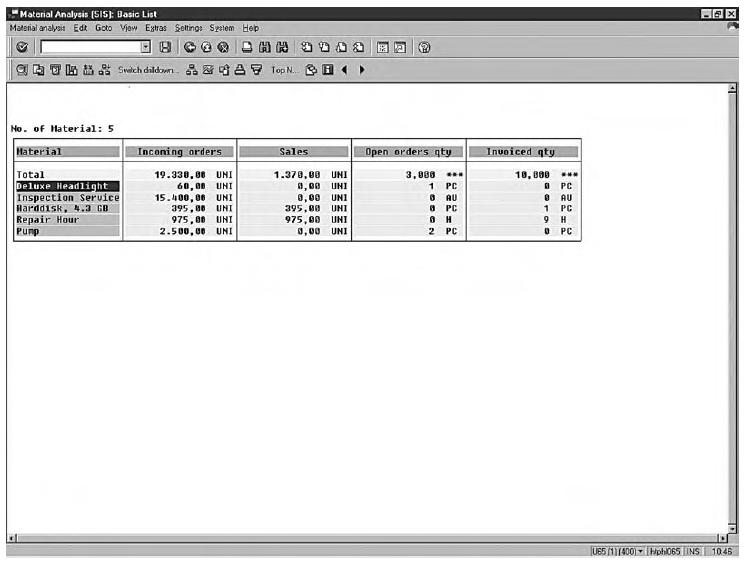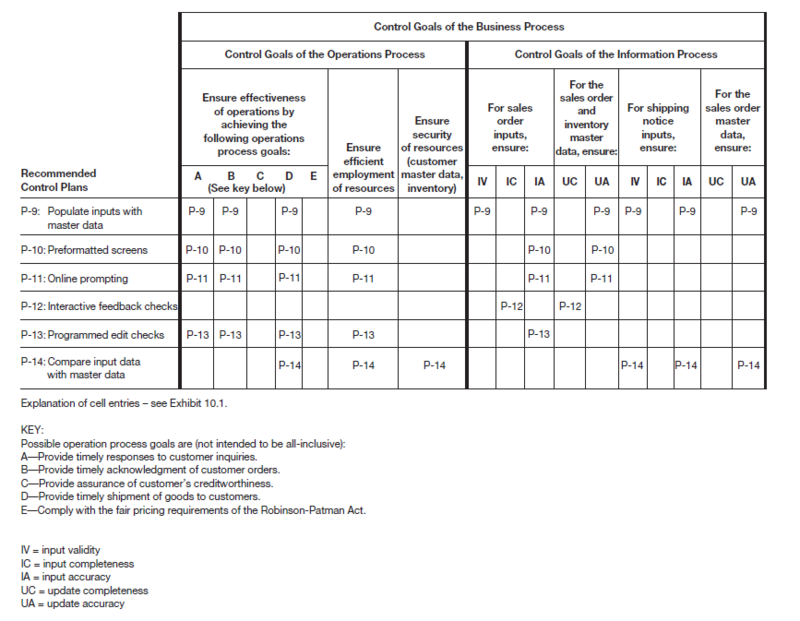The control goals listed across the top of the matrix are no different from the generic goals presented in CONTROLLING INFORMATION SYSTEMS: PROCESS CONTROLS, except that they have been tailored to the specifics of the M/S process.
Two categories of control goals are presented in the matrix. The operations process control goals are:
- Effectiveness of operations. A through E in Figure 11.13 identify five representative operations process goals for the M/S process. Operations process goals support the purpose of the process. In the case of the M/S process, notice that for the most part the operations process goals address the issue of satisfying customers, a topic discussed earlier in the chapter. In addition, the control matrices in this text incorporate as one of the process goals the goal of complying with laws, regulations, and contractual agreements when applicable. For that reason, we include goal E for the M/S process—Comply with the fair pricing requirements of the Robinson-Patman Act of 1936. (Briefly stated, that act makes it illegal in industrial and wholesale markets for a seller to charge different prices to two competing buyers under identical circumstances unless the seller can justify the pricing differential based on differences in its cost to manufacture, sell, and deliver the goods.)
TECHNOLOGY INSIGHT 10.3
Enterprise Systems Support for the M/S Process
The main effect of the introduction of an enterprise system into the M/S process depicted in Figure 11.8 is the integration of the processing programs and the various data stores into a single unified processing system with a single underlying database. In terms of the diagrams, the primary impact is therefore on the activities depicted within the “centralized data processing department.” These changes are demonstrated in the diagram. You should note while studying this diagram, that while the systems flowchart has significantly simplified, the consolidation of all of the processes and databases shown in Figure 11.8 to the single process and database in the figure shown here suggests the complexity involved in the implementation of an enterprise system. Careful design is required.


- Efficiency in employment of resources. These goals support the savings of time and money.
- Resource security. Note that in this column we have named two specific resources that are of concern to the M/S process. Control plans should be in place to prevent theft or unauthorized sale of merchandise inventory. Equally important are plans designed to preclude unauthorized access to or copying, changing, selling, or destruction of the customer master data.


The information process control goals comprise the other category. These goals are divided into two sections—one section for sales order inputs and a second section for shipping notice inputs. To focus our discussion, we have not included other inputs (i.e., customer inquiries, credit applications, credit-limit changes, and management inquiries). The information process control goals are:
- Input validity (IV). A valid sales order is one from an existing customer—one contained in the customer master data—whose current order falls within authorized credit limits. Recall that to be added to the customer master data, a customer had to pass an initial credit investigation. By adding the customer to the customer master data, management has provided authorization to do business with that customer. Valid shipping notice events are those that are supported by both an approved sales order and an actual shipment of goods.
- Input completeness (IC) and input accuracy (IA) of sales orders or shipping notices.These goals ensure that all orders are entered and entered correctly.
- Update completeness (UC) and update accuracy (UA) of the sales order and inventorymaster data.1 We have seen earlier in the chapter that the sales order master data is updated twice—once when a new sales order is created, and later to reflect the shipment of that order. The single inventory master data update occurs at the same time the new sales order is created.
|
Review Question What five operations process goals does the matrix show? |
- 6758 reads






